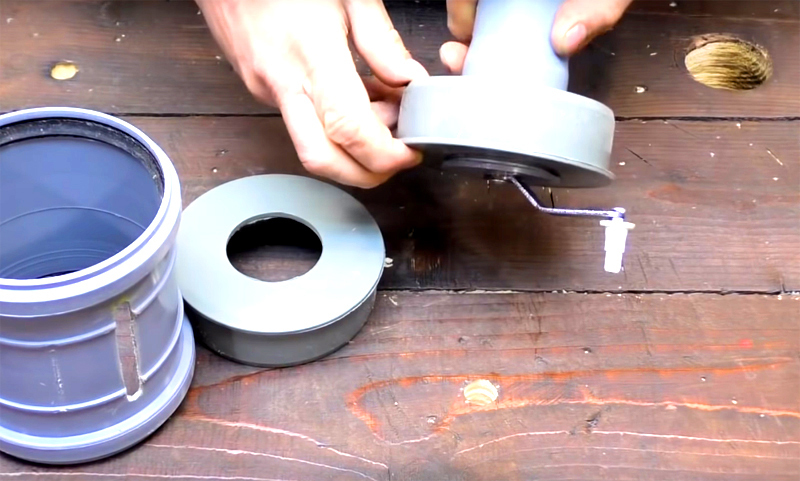Homemade tools and devices - this is what distinguishes a real Kulibin from a simple home lover. Some gadgets from such masters are so practical that they are worthy of repeated repetition and even an industrial patent. But while there is no patent, and such things have not appeared on sale, seize the moment and use the free master classes. An example of such a product was presented to his viewers by the author of the YouTube channel. Creates DIY. You can repeat it with your own hands and use it every day. It is a practical carry, suitable for many household and garden tasks.
Read in the article
- 1 What you need to work: tools and materials
- 2 Preparation of parts for the mechanism
- 3 Sequential coil assembly
What you need to work: tools and materials
As the name suggests, you need a piece of sewer pipe to create the coil.

In addition to this coupling, you will need another piece of the same pipe of a smaller diameter, as well as tools: a screwdriver, an assembly knife, a tape measure and a corner. For carrying yourself, you need a long wire and plug, and a socket or lamp holder.
Preparation of parts for the mechanism
The idea is to hide the wire in a spool, making the carrier compact and tidy to store. This is a real problem as long wires have an uncomfortable tendency to get tangled up all the time.

 PHOTO: YouTube.com
PHOTO: YouTube.com PHOTO: YouTube.com
PHOTO: YouTube.com PHOTO: YouTube.com
PHOTO: YouTube.com PHOTO: YouTube.com
PHOTO: YouTube.com PHOTO: YouTube.com
PHOTO: YouTube.com PHOTO: YouTube.com
PHOTO: YouTube.comSequential coil assembly
The final coil assembly will only take you a few minutes.
 PHOTO: YouTube.com
PHOTO: YouTube.com PHOTO: YouTube.com
PHOTO: YouTube.com PHOTO: YouTube.com
PHOTO: YouTube.com PHOTO: YouTube.com
PHOTO: YouTube.com PHOTO: YouTube.com
PHOTO: YouTube.com PHOTO: YouTube.com
PHOTO: YouTube.com PHOTO: YouTube.com
PHOTO: YouTube.comIf you do everything as described, you will receive a compact carrying case with a protected wire. It will be easy to use and extremely convenient to store. You will appreciate the beauty of this invention the first time you use it.
This is not the only option for homemade wire coils, but perhaps the easiest to design and easiest to use. There are other developments from folk craftsmen. Here is one of them in the video:
If you liked the idea - write about it in the comments! If you tried to repeat the experience, send us your photos, what happened as a result. We are waiting for your own developments at the editorial office with a photo and a detailed description!
